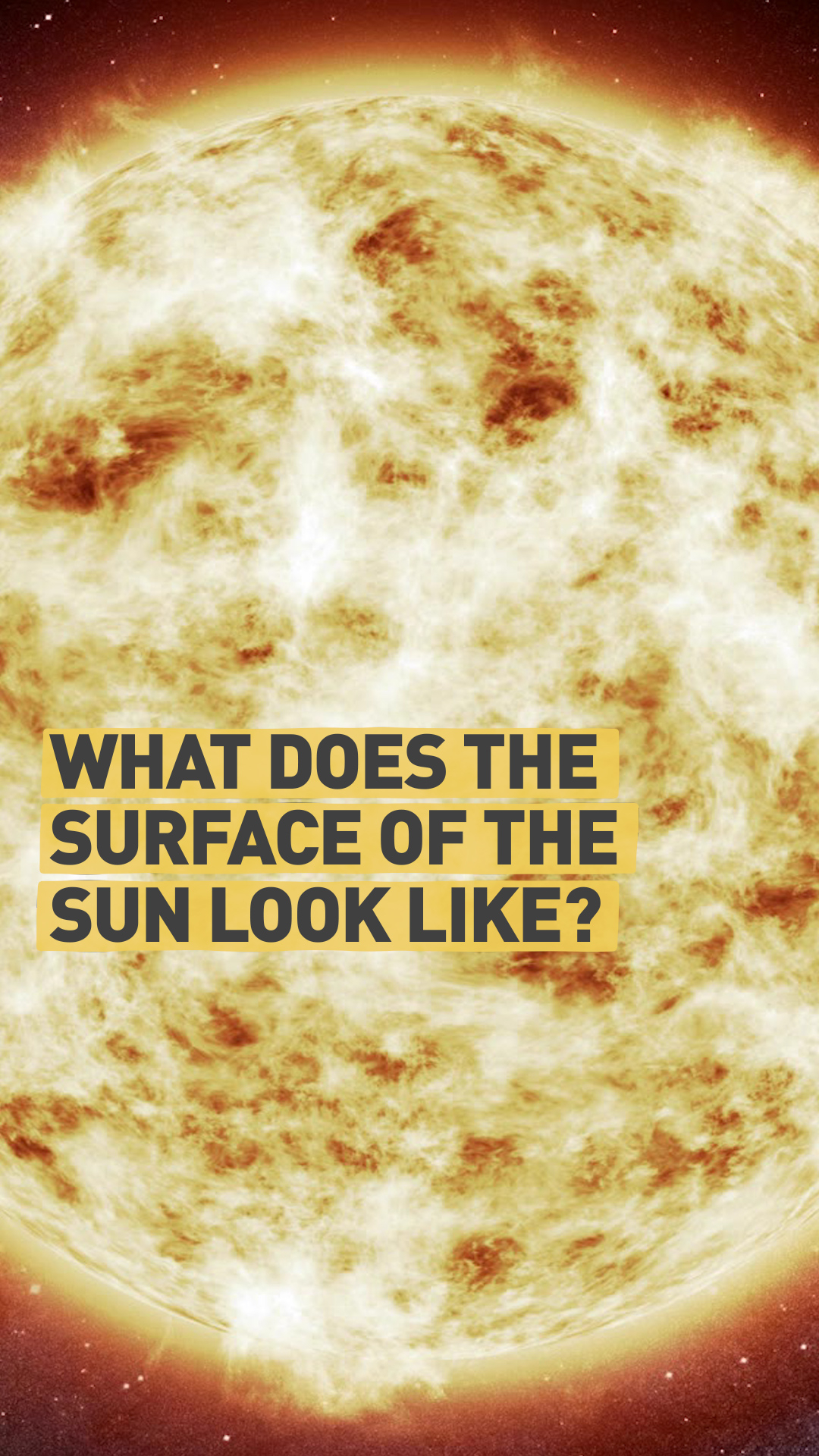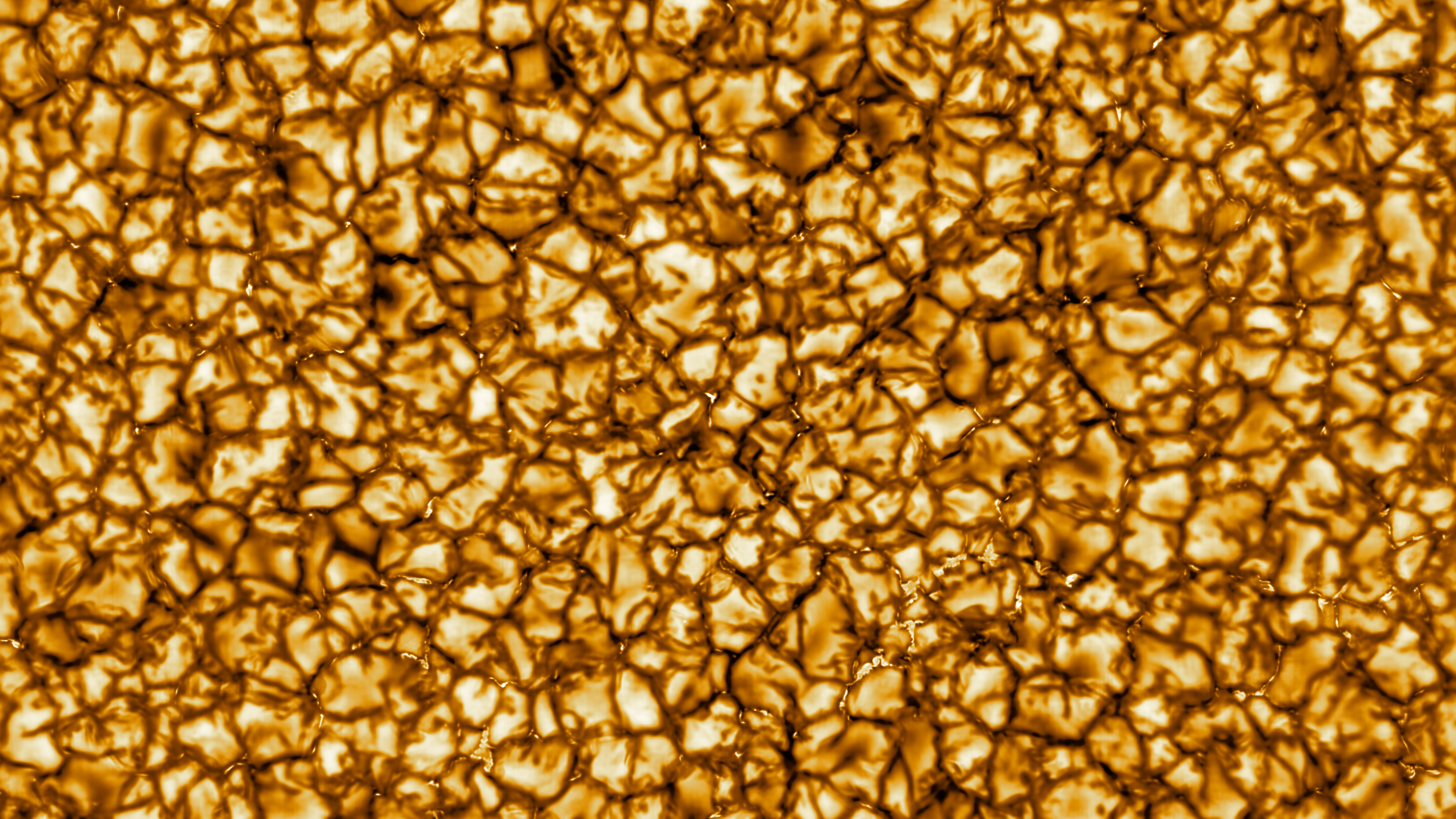01:06

New images of the Sun have shown its surface in detail never seen before. The images were taken by the world's largest solar telescope, which is four meters tall and based in Maui, Hawaii.
The National Science Foundation's (NSF) Daniel K. Inouye Solar Telescope recorded images that show the surface covered in "cell-like structures," each roughly the size of France.
These blobs are evidence of "boiling" plasma being pushed out of the Sun's surface. The plasma escapes at the center of each structure and a mound is created when the boiling material falls back to the ground.

These blobs show boiling plasma being pushed out of the Sun's surface. (Credit: National Science Foundation)
These blobs show boiling plasma being pushed out of the Sun's surface. (Credit: National Science Foundation)
The researches took these images to better understand the activity of the Sun, or space weather. Despite the distance of the Sun from the Earth, the magnetic eruptions from its surface can damage satellites and interfere with radio communications.
In 2017, space weather shut down the radios used by first responders during Hurricane Irma, which killed more than 130 people. "On Earth, we can predict if it is going to rain pretty much anywhere in the world very accurately and space weather just isn't there yet," said Matt Mountain, the president of the Association of Universities for Research in Astronomy.
"Our predictions lag behind terrestrial weather by 50 years, if not more. What we need is to grasp the underlying physics behind space weather and this starts at the Sun, which is what the Inouye Solar Telescope will study over the next decades."
The scientists from the NSF will work with NASA's Parker Solar Probe in the future, which is currently in orbit around the Sun, and another orbiter that will be launched through a joint project between the European Space Agency and NASA.
NASA's current probe is 3.8 million miles from the Sun's surface, which is closer to the Sun than Mercury, which is 32 million miles from its surface. It is also seven times closer to the Sun than any other previous spacecraft.
"These first images are just the beginning," said David Boboltz, program director at the NSF. "Over the next six months, the Inouye telescope's team of scientists, engineers and technicians will continue testing and commissioning the telescope to make it ready for use by the international solar scientific community.
"The Inouye Solar Telescope will collect more information about our Sun during the first five years of its lifetime than all the solar data gathered since Galileo first pointed a telescope at the Sun in 1612."